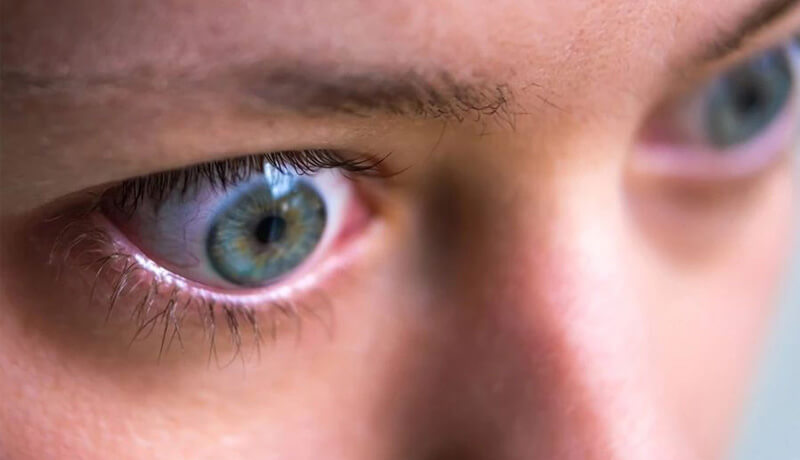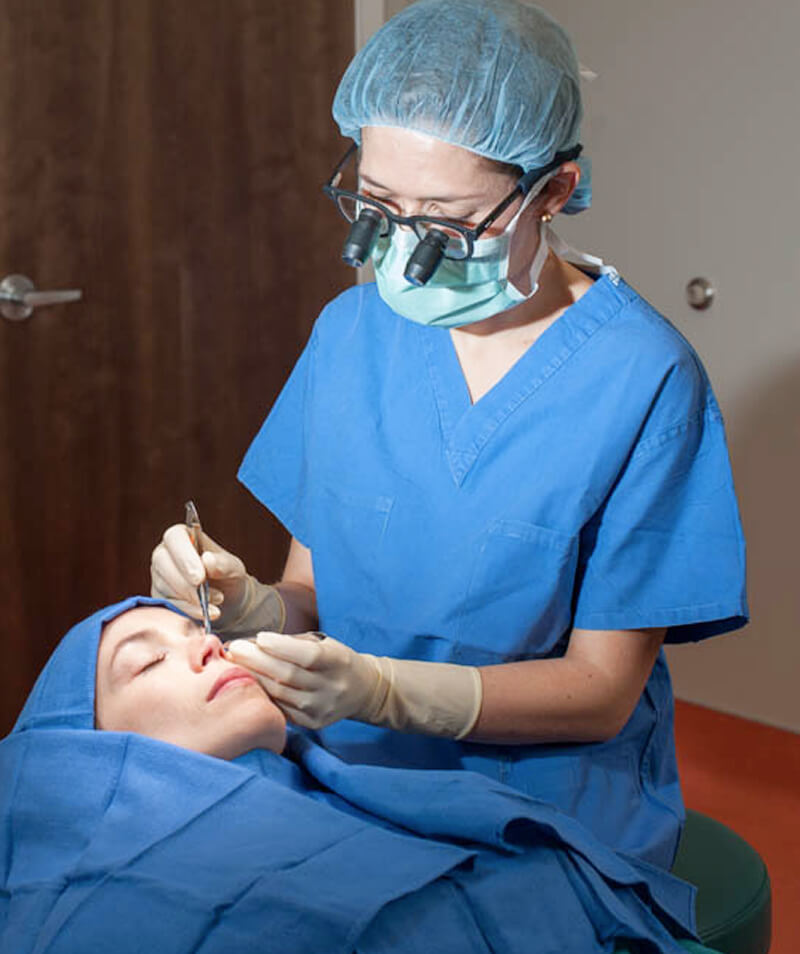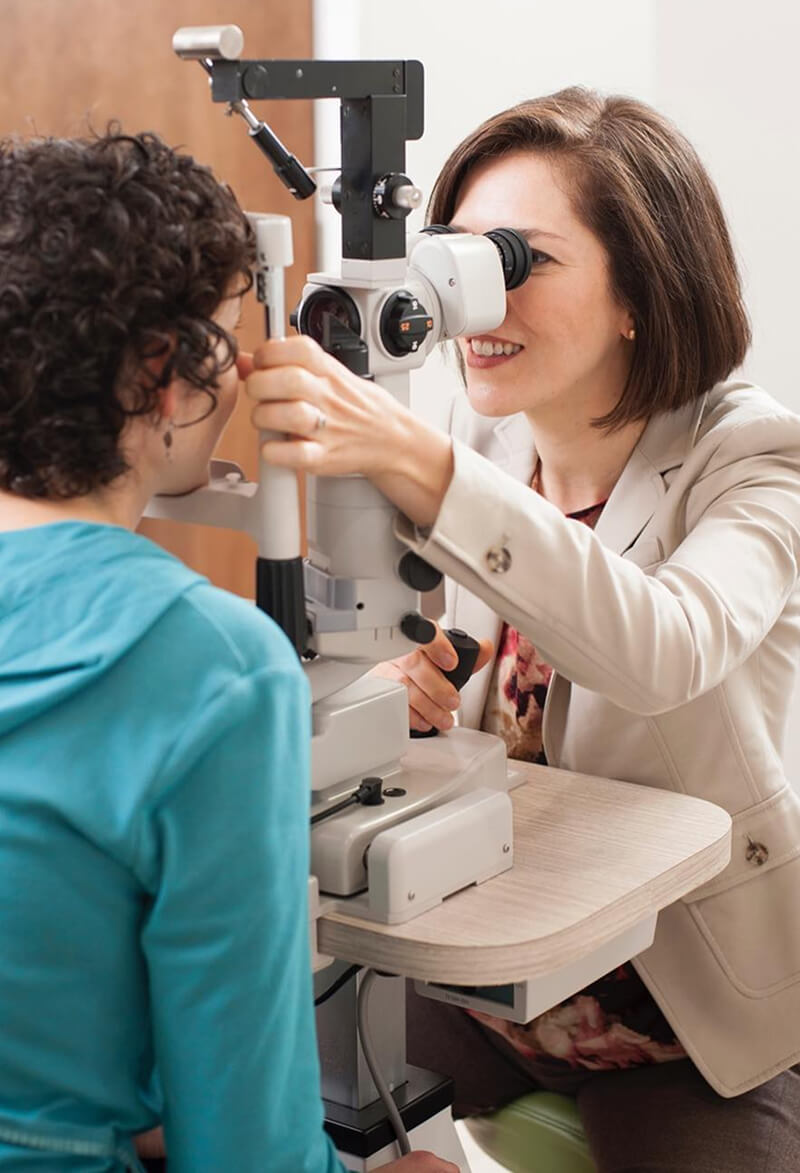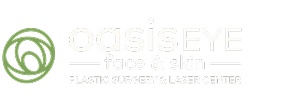Dry Eyes
Oasis Eye Face and Skin | Ashland, Medford, Grants Pass, Oregon

Types of Dry Eye
There are two main types of dry eye syndrome:
Evaporative Dry Eye – This is the most common type of dry eye. It occurs due to poor quality oils being produced such that the tears evaporate too quickly off the surface of the eye. The oil glands, or meibomian glands, become inflamed and plugged. They secrete a thick paste instead of a clear liquid oil. This leads to very fast evaporation of the tears in between blinks. Instead of being moist and lubricated, the eye surface becomes dry and rough. This causes blurry vision, irritation, and a gritty or sandy feeling in the eyes.
What is Meibomian Gland Dysfunction?

“My experience at Oasis Eye was great! From the decor to the staff, I knew that my needs would be taken care of in the most professional caring matter. Dr. Schiedler, in my opinion, is an excellent ocular plastic surgeon; and I recommend her services.”
“Dr. Schiedler and staff were all wonderful. Everyone treated me with such respect, dignity and kindness. My post-op and pre-op questions were all answered with clarity. My wait time was minimal and my overall experience was excellent.”
“My experience with Dr. Schiedler and her staff was above and beyond amazing. Everyone was very professional, personal, and concerned about me throughout my whole treatment from start to finish. I would definitely recommend her to anyone needing the services Oasis Eye provides.”
“My experience was great! I needed a biopsy on my lower eyelid. Dr. Schiedler explained the entire process. The process was just how she explained to me and was in no way painful during or after the procedure.”
“Thank you for providing me such excellent care through each stage of my procedure. I am very pleased with the results and ever so appreciative of the attention and care all of you have provided. I have truly enjoyed each of you!”
“The success of my surgery with Dr. Schiedler was far in excess of my initial expectations. As far as I am concerned, Dr. Schiedler worked “miracles” with my sight and appearance. She completely corrected a congenital situation in one eye, and brought my other eye back to the way it looked 30 years earlier.”
“Dr. Schiedler did a lower eye retraction repair with a hard pallet graft which turned out amazing. So happy I got the surgery and it was virtually painless. Dr. Schiedler is very kind and caring and she takes the time to make sure you get the very best care.”
“I have been getting Botox/Xeomin injections for 15 years. I just recently moved here from San Francisco and she by far is the best that I have ever been too. She is extremely knowledgeable in her field. I am getting BBL and Halo Laser next week, I can’t wait! I am very fortunate to have found her.”
Symptoms of Dry Eyes
Dry eye symptoms include:
- A dry or burning eye sensation made worse with reading or visual tasks
- Gritty or sandy feeling
- Foreign body sensation
- Watery eyes due to a reflex mechanism whereby the eye senses dryness and tries to compensate
- Fluctuating blurry vision
- Itchy eyes
- Eye pain
- Inability to read or use a computer for prolonged periods due to eye discomfort
- Red eyes
- In severe cases, styes and ulceration of the cornea
Relationship between Eyelash Problems and Dry Eyes
Find Relief with Treatments Options for Dry Eye
- Artificial tears (over-the-counter drops)
- Eye gels and ointments
- Warm compresses that melt plugged oils
- Eyelid scrubs to clean off dead skin and plugged oils from the lashes and eyelid margins
- Cliradex wipes that contain 4-terpenol derived from tea tree oil to kill mites inside the oil glands and lash follicles
- Prescription eye medications to reduce inflammation, such as steroids or Restasis (cyclosporine eyedrops)
- Oral medicines that reduce inflammation, such as doxycycline (an antibiotic)
- Omega-3 supplements
- Sleeping with an eye mask
- Humidifiers in the bedroom

Professional Medical Treatments for Dry Eye
- Plugs in the tear drain to retain more moisture on the eye surface
- Lipiflow (a device that heats up the eyelids and massages them to unblock plugged oil glands)
- Intense pulsed light (also known as broadband light or BBL)
Dr. Schiedler will help guide you in selecting the best dry eye treatment option for you and your needs. She will also perform an exam to determine the quantity and quality of your tears.
Broadband Light for Dry Eye Symptom Reduction
What to Look for in Makeup to Prevent Dry Eye
If you suffer from dry eye symptoms that are causing eye irritation, contact eye specialist and oculofacial plastic surgeon Dr. Vivian Schiedler at Oasis Eye Face and Skin. She will work with you to devise a treatment plan that will help eliminate your dry eye syndrome and restore eye comfort. Schedule a consultation today by calling (541) 449-9555 to get started.
